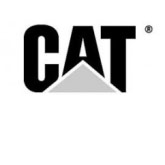Telehandler Tires
Telehandlers, or telescopic handlers, are versatile machines widely used in construction, agriculture, and industrial settings for lifting and
moving heavy loads over varying terrain. The type of tire used on a telehandler plays a critical role in its performance, stability, and safety.
Shop by category
Here’s a detailed look at the different uses, examples, and types of telehandler tires:
- Uses of Telehandlers:
Construction: Telehandlers are commonly used on construction sites for lifting materials to elevated positions, such as on rooftops or upper floors.
Agriculture: In farming operations, telehandlers are used to handle bales of hay, transport feed, and perform other tasks requiring lifting and reaching capabilities.
Industrial: Telehandlers are utilized in warehouses and factories for loading and unloading goods from trucks, stacking pallets, and moving heavy machinery.
- Examples of Telehandler Tire Types:
a. Pneumatic (Air-Filled) Tires:
All-Terrain Tires: Designed for versatility, these tires feature moderate tread patterns suitable for both on-road and off-road use. They provide good traction on various surfaces, including gravel, dirt, and asphalt.
Rough Terrain Tires: These tires have deeper and more aggressive tread patterns specifically engineered for challenging off-road conditions. They offer superior traction on loose soil, mud, and uneven terrain found on construction sites and agricultural fields.
b. Solid Rubber Tires:
Solid Rubber Tires: Maintenance-free and puncture-proof, solid rubber tires are durable and long-lasting. They provide stability and can withstand the demands of heavy-duty operations without the risk of going flat. However, they offer less cushioning compared to pneumatic tires.
- Considerations for Choosing Telehandler Tires:
Terrain: Determine whether the telehandler will primarily operate on rough, uneven terrain or smoother surfaces.
Load Capacity: Ensure the tires are rated to handle the maximum loads the telehandler will lift.
Durability and Maintenance: Consider the durability of the tires in relation to the expected usage and the need for regular maintenance.
Cost: Evaluate the initial cost versus the expected lifespan and performance of different tire types.
Choosing the right telehandler tires is crucial for optimizing performance, safety, and efficiency across various applications. Each type of tire offers unique advantages suited to different operating conditions and requirements, ensuring telehandlers can perform effectively in diverse environments from construction sites to agricultural fields and industrial facilities. Regular maintenance and proper tire selection contribute significantly to maximizing the telehandler's uptime and minimizing operational costs over its service life.








